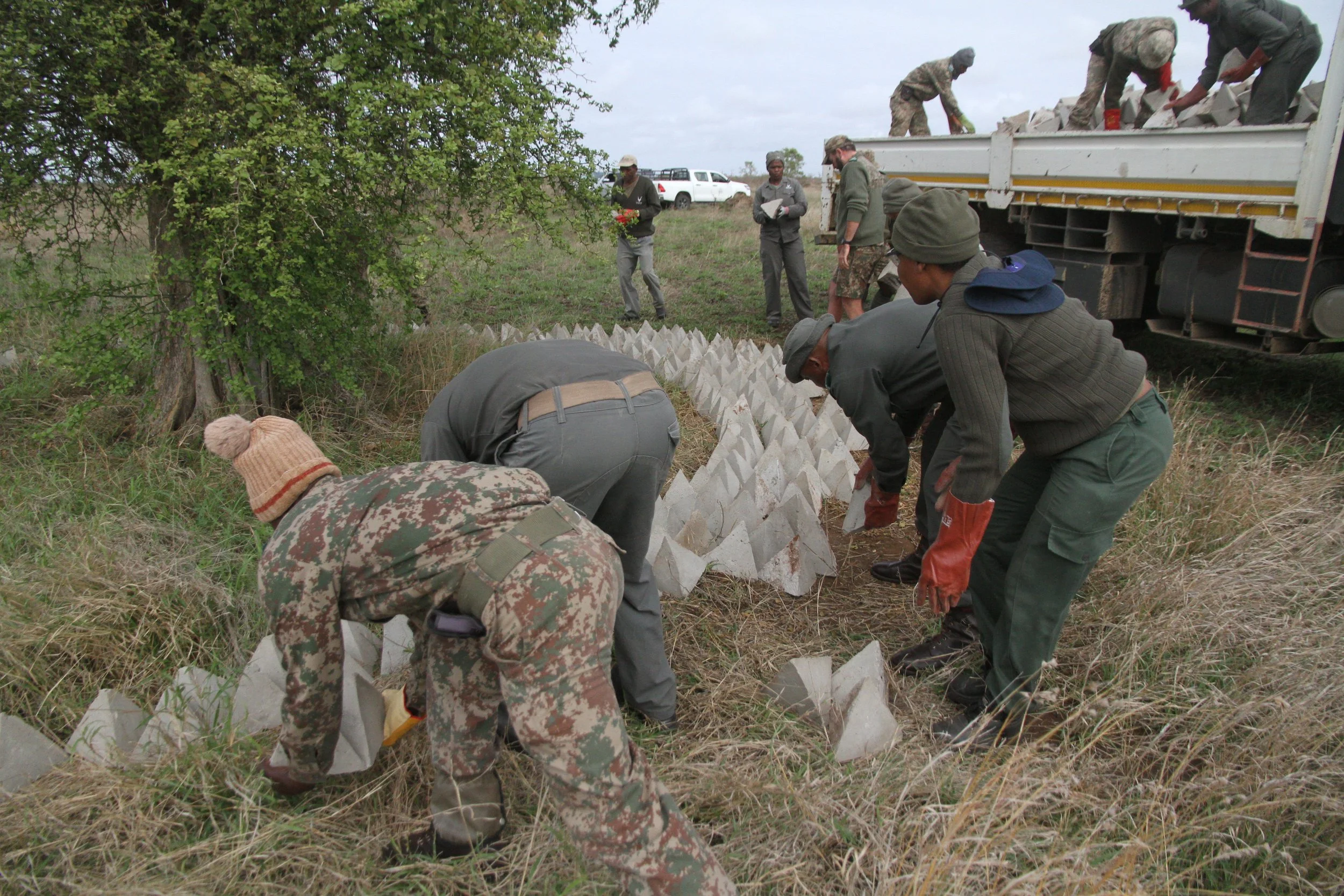Funding for Vulture research - an update from the Hawk Conservancy Trust
Over the past few years, Birds on the Brink has provided funding for vulture-related projects undertaken by the Hawk Conservancy Trust, and worked closely with Dr Campbell Murn and Dr Jamie McKaughan. Here, Jamie provides an update on two of their projects.
Above: installing the protective concrete pyramids. Photo ©André Botha/Hawk Conservancy Trust.
Jamie said ‘The most recent funding from Birds on the Brink helped our Lappet-faced Vulture project in South Africa. This is progressing well with a pilot scheme in place aimed at protecting nesting trees. The first two trees have been protected, which is a great start and we are using camera traps to monitor whether the method is effective in discouraging elephants from damaging or knocking down the trees.’
Above: The ‘Pyramid’ team. Photo ©André Botha/Hawk Conservancy Trust.
‘We are using up to 2,000 concrete pyramids per tree to protect them, creating the pyramids in moulds in a reserve neighbouring Kruger. These are then transported through the bush to the specific individual trees, so it is quite the logistical challenge. The method has been used successfully elsewhere in the region: there, the trees in question continue to be used by vulture and eagle species for nesting, and have not been knocked over. As a result, we are confident that our vultures won’t be disturbed by this method and the approach will prove to be an effective mitigation strategy.’
Above: a protected vulture nesting tree. Photo ©André Botha/Hawk Conservancy Trust.
Turning to projects elsewhere in the world, Jamie continued ‘In central Asia, fieldwork regarding migratory populations of Egyptian Vultures expanded into Kyrgyzstan for the first time this year. This means that between us and in-country partners, birds have now been tagged in Uzbekistan, Kazakhstan and Kyrgyzstan for this project. This year saw three juvenile Egyptian Vultures tagged in Uzbekistan and two in Kyrgyzstan, while project partners in Kazakhstan added a further four birds. This means we are currently tracking 20 Egyptian Vultures.’
Above: Egyptian Vulture on migration. Photo ©Paul Sterry.
The data we receive from these birds is really valuable and will help us understand their typical migration routes and key areas they travel through/over. It will also continue to provide data on survival rates. Fieldwork this year also included successful congregation counts at five sites in Uzbekistan and one in Tajikistan. The field team were also able to identify some more nesting grounds. Both of these activities provide valuable data that will allow us to estimate Egyptian Vulture population numbers in the region and monitor their fate.’




